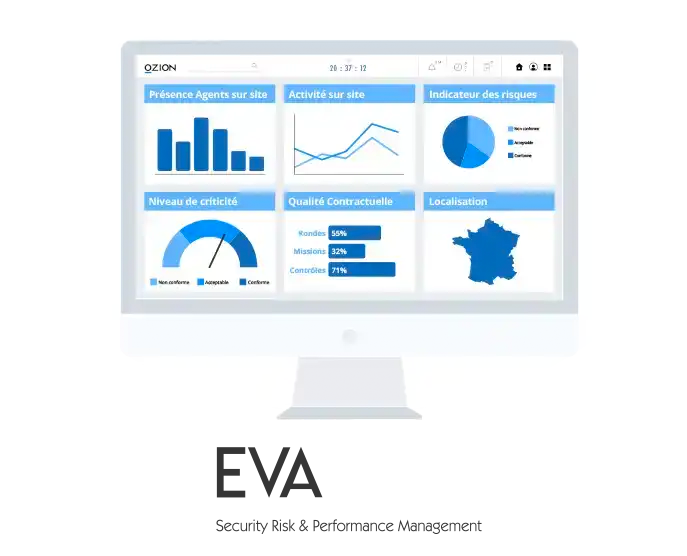PLACING THE CONTRACTOR IN THE CENTER OF THE SECURITY ORGANIZATION
It begins with the Security Director as they are responsible for protecting people, property and an ever-increasing list of topics, incuding; cybersecurity.
Their mission is complex and continually evolves; their main responsibilities are:
- Risk Prevention
- Contractual conformity (SLA)
RISK PREVENTION - KEY Benefit
Access to reliable and complete data on each event reported by agents allows for a better positioning of risk prevention.
Through collected data Security Directors have access to both qualitative and quantitative information. Providing the intelligence and insight needed to steer an operation in a required direction.
This is a transformation of Risk Prevention, Security Directors can now:
- See all the events that occurred during a defined period according to various parameters, including; the perimeter and level of criticality.
- Automatically model the projection of risks by the type of risk and precise location on site ( achieved by analyzing all the data reported by the agents with the Eva predictive engine).
- Visualize the probability of a risk, bu type or criticality, in a 3D plan .
- Take the necessary steps needed to minimize the likelihood and impact of the main risks.
TRACEABILITY
The security director joins a group of directors who manage the performance of their activity in real-time: DAF, Commercial Director, Director of Outsourced IT and certain FM directors ..
It is now possible to trace the data which makes it possible to supervise and control performance from the Eva Pilot real-time dashboard.
Performance management consists of managing teams to achieve the key objectives defined in the contract. Management sees at all timestamps when the objectives should be achieved. If any discrepancies appear, management will intervene. Advantages include:
- An effective means to visualize exactly what is happening.
- An ability to know at an time if the quality conditions set by the contract are being met.
- Access periodical statistics (daily, weekly, monthly, quarterly, annually).
- Follow associated KPIs
- An improved dialogue with providers.
- An effective means to visualize exactly what is happening.
- The placement of alerts/warnings on all conditions where a resulting penalty can occur.
Systematic Conformity
- For the first time, agents can report all data in a reliable manner that in turn can be utilized for monitoring and steering the activity.
- Restitution of all events by level of criticality, type of risk, places filterable by period (day, week, month, year)
- Predict risks by type, location, time, probability and level of potential impact
- Real-time performance monitoring accroding to each dimension a contract will be measured against. Including: Punctuality, taking on agent positions, percentage of scheduled tasks carried out by type (rounds, checks, etc.)...
- Remain continually informed on activity performance (DAF,IT,FM, Sales)
- Real-time reporting.






